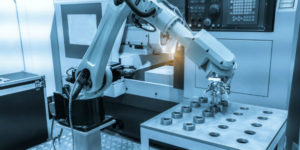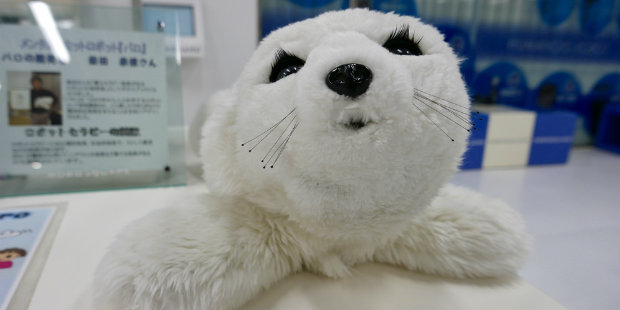
This summer a herd of animatronic dinosaurs are touring the country. In the temporary theme park will be a pack of 30 moving, breathing, true-to-life models of familiar dinosaurs powered by robotics.
The animatronic models will interact with visitors, roaring and snarling at those brave enough to approach. It is a must see for every family with school age children and tickets cost a mere £38 per family. Robotics in entertainment is big business.
Artificial Intelligence and robotics in hazardous environments
In the spring budget, Chancellor Philip Hammond announced a fantastic £93m for Artificial Intelligence and robotics in hazardous environments as part of the Industrial Strategy Challenge Fund. I’ve written before about the potential for robotics in the UK and I’m delighted to see robotics included in this first wave of disruptive technologies that have the potential to transform the UK economy. The target for this funding is:
developing cutting-edge artificial intelligence and robotics systems that will operate in extreme and hazardous environments, including off-shore energy, nuclear energy, space and deep mining.
There is a pressing need for government support to accelerate technologies for these applications in hard to get to places in sea, space and radioactive areas.
Robots to combat loneliness
Having looked at consumer spending last year I identified several other applications of robotics that despite seeming frivolous, have a growing market and are a real business opportunity. They are:
- Combating loneliness
- Entertainment and theme parks
- Food and drink consumer service
There are more and more people living alone. And ill health can mean isolation and loneliness.
Wouldn’t it be great if we could have cats that don’t die if we forget to feed them? Cue cuddly purring robot cat, or already on the market Paro the baby harp seal. The Japanese robot Telenoid has been designed to combat loneliness to help people feel that people who are far away are close by.

The market need to combat loneliness is proven and some products are on the market. But society is moving to enforce greater isolation and there is more technology development needed to make companion robots as satisfying as we will need them to be.
Robotic company Engineered Arts put on a theatrical play with Pipe line theatre called Spillikan, a play about a humanoid robot and a dementia sufferer who believed the robot was her dead husband. We are already at the point where robots can be programmed to perform in theatre to underline mental health and loneliness issues in society. This particular humanoid robot, called RoboThesbian, is more usually used in museums to bring content to life by inspiring awe and humour in visitors.

Robots for pure fun value
Robots can have a huge impact on human emotions as we are so quick to anthropomorphise. In Japan, they have no ethical concerns about robots replacing people, there is even a fun and memorable robot hotel in Japan where a dinosaur is working at check in. In Cardiff and London, we’ve got our own version, the Robot Pub Group dispensing beers. I can imagine both attract more customers just through pure fun value.
Entertainment can open doors to more impactful uses
In conclusion, there are many interesting robot applications and it hasn’t all been figured out yet. There may be pressing needs in markets where we should focus limited robotic expertise first, but there are some good companies in the UK experimenting with alternative applications.
Sometimes entertainment is where disposable income is spent and there is money to be made. This has happened before in other sectors, think of the profits made through computer gaming and movies that were pumped into software development that companies are now using to realise remote surgery and Industry 4.0.
We can support these and many other areas which straddle several sectors or sit outside of our priority sectors through our Open funding competitions, Knowledge Transfer Partnerships and the robotics strand in our Emerging and Enabling competitions.


















